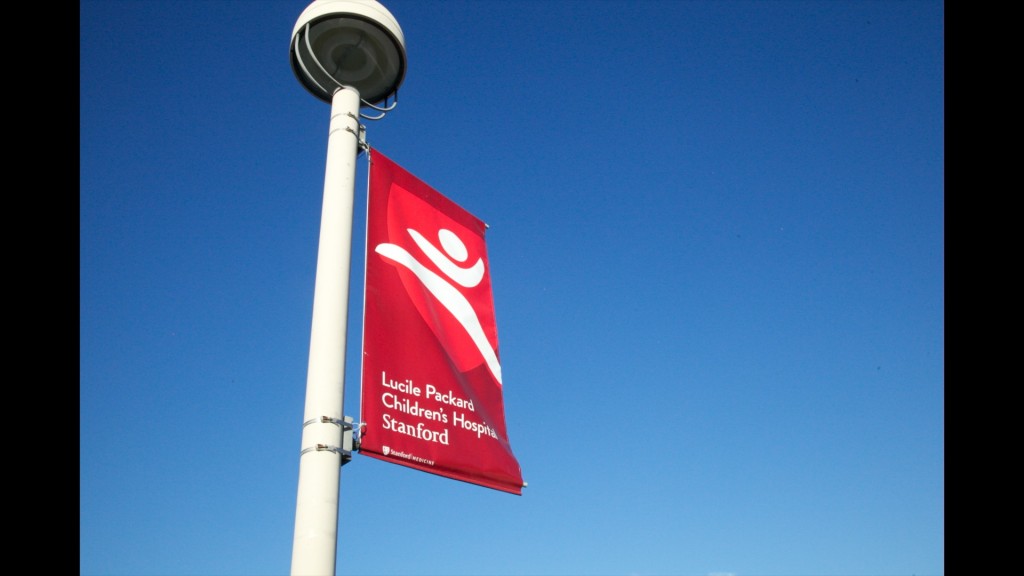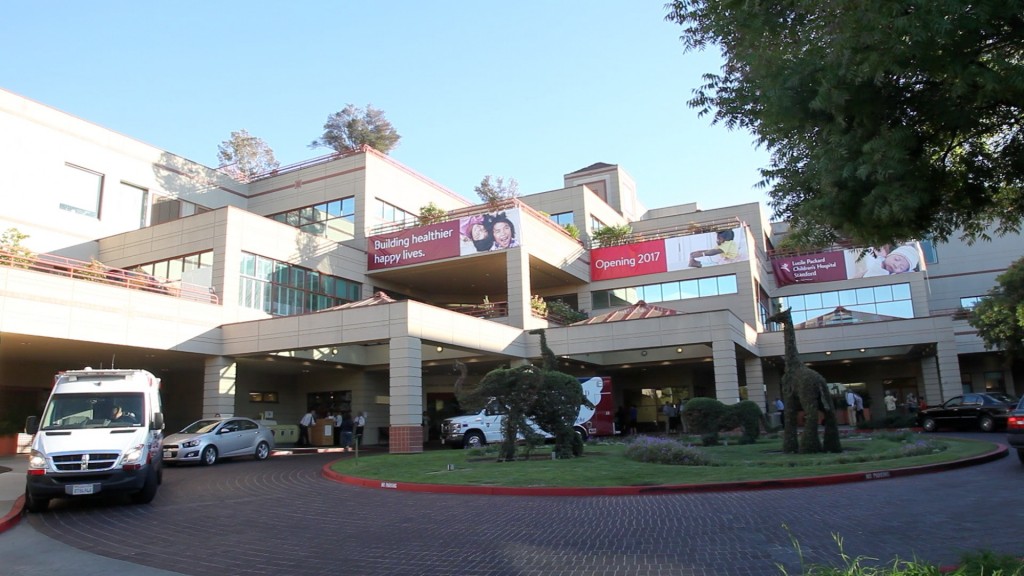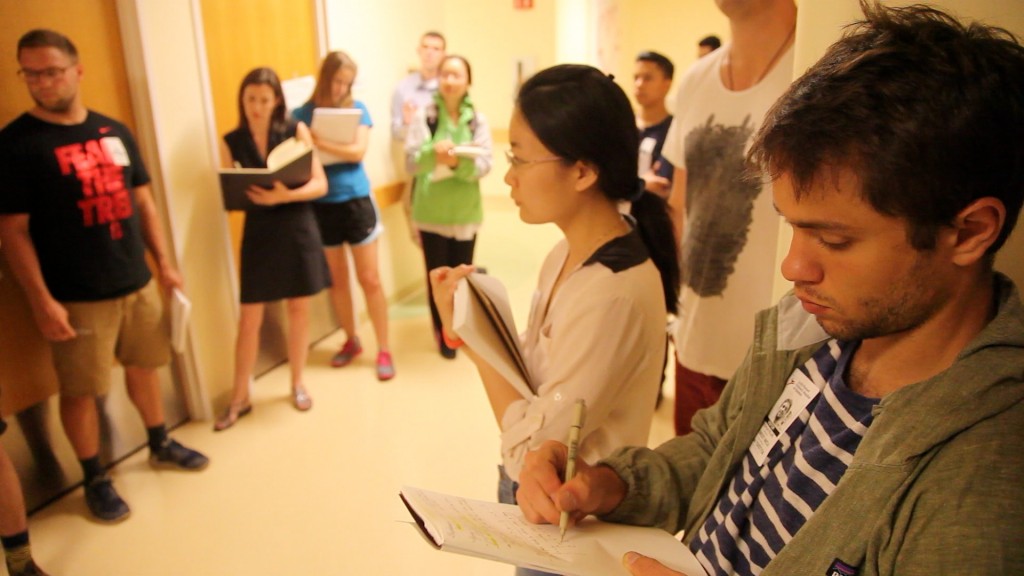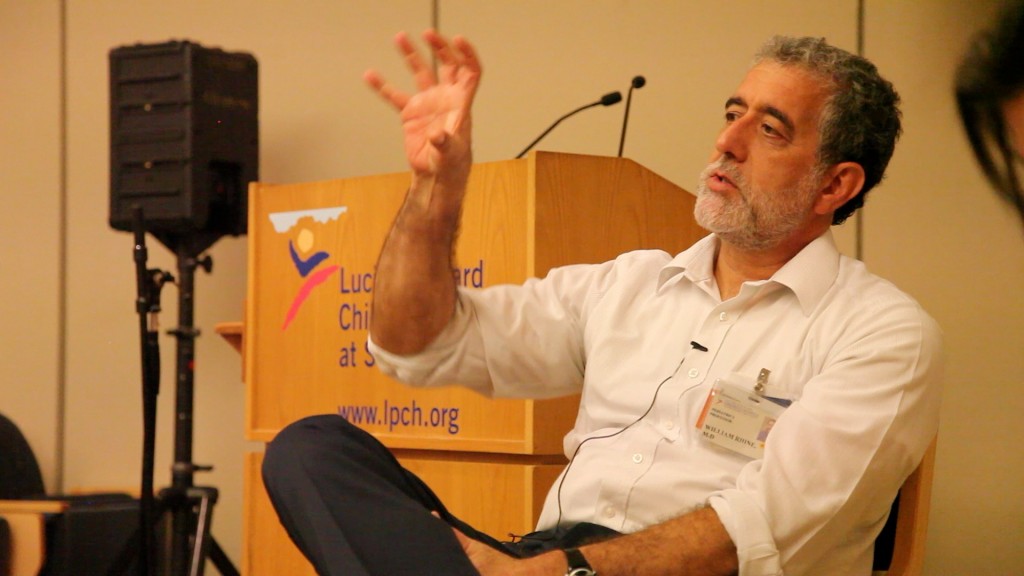Yesterday our class toured the Lucile Packard NICU.
I think many students suddenly understood the issues at hand by being in the center of it all. In room 4 there was a baby getting dialysis. A senior NICU nurse overheard Dr. Rhine and pleaded with us to take notes from the nurses. We will be inviting her and other clinicians to our “Ethnography Day” on Oct. 30th to participate in the interviews students will conduct. In room 1 clinicians had to practically walk over each other to perform ultrasounds and other tests on babies. I only saw two sets of parents there yesterday. I can imagine how unpleasant it is for a parent to try and pull up a chair to do kangaroo care, or try to breastfeed in that space. There just isn’t room for any privacy. Lucile Packard’s NICU isn’t the worst neonatal intensive care unit environment, but it clearly isn’t one of the best either. Hopefully the new NICU project at Lucile Packard will reflect the wishes and wisdom from the people who work there. Later this month we will visit John Muir NICU in Walnut Creek and have a chance to compare the two environments.
When I asked students what their first impressions were, some of them had rather poetic answers. I noted Natalie’s response, “Chaotically Sterile.” It sounds like the name of a Sylvia Plath poem. She nailed it for me. Other comments included: “cramped, retro-fitted, unfriendly, worrisome flashing lights, noisy, cluttered, wires everywhere, wasted space, a lack of architectural style, and little privacy.”
Today I received an e-mail from one of our students. He had several thoughts about our discussion in the auditorium after the visit. The first was regarding the idea I shared about the potential of getting insurance companies to be more involved by providing incentives to parents for spending time in the NICU to support the care of their baby.
This student saw two societal barriers to having parents more involved in the care of their infant: 1) Healthcare is perceived as something carried out by the doctor for you, and you are supposed to stay out of the way. 2) The constant and persistent assault on parenthood, and particularly motherhood, in our society.
In regard to the first concern, he suggested that insurance companies provide incentives to the hospitals for increasing the presence of families in the NICU. This makes a lot of sense to me, although the hospitals would have to bear this burden. Studies have shown that the more hours a parent intimately holds their premature baby, the better for the baby’s brain growth and development. Brain weight increases 400% from 26 weeks to term (3 months). Every second in the last trimester 40,000 synapses are being formed. We are altricial mammals. The preterm newborn is completely dependent on their mother for kinetic, tactile, thermal, auditory, gustatory, olfactory and circadian stimuli. It’s clear that when a baby is in the mother’s arms, conditions can be pretty closely replicated to the in utero environment. My question for Dr. Bob White will be: are there studies that prove a cost savings based on the implementation of a family-centered care model? If so, why aren’t insurance companies jumping on this as a cost-savings opportunity? I can compare this scenario to the Joint Commission asking that hospitals increase the percentage of breastfeeding mothers at discharge in order to be designated as a “Baby-Friendly” hospital. Could a new designation be developed called “Family-Friendly?”
In regard to this student’s second concern: Why is it that in our culture mothers are expected to go back to work after 6 weeks of leave? For some parents this may feel like an injustice, but for other moms they can’t wait to go back to work. I know moms in both camps. It’s easy to project our own values on others when talking about parenting choices. Why might a mother want to go back to work soon after giving birth? Why wouldn’t she? How could our society, and business culture, better support mothers who wish to supply their infant with breast milk, or parents who wish to visit their child regularly in the NICU? This conversation reminds me of a book I am currently reading called Mother’s Milk: Breastfeeding Controversies in American Culture by, Bernice Hausman. In the book, Hausman examines why nursing one’s baby is an ideologically charged experience in contemporary culture. (Maryam, I think you would enjoy this one…)
During our recap conversation yesterday I touched on “work-arounds” that we saw while touring the NICU. We all saw DIY solutions clinicians used to solve specific problems. I mentioned that whenever you see any kind of “work-around” it’s a red flag that the problem which is being addressed is ripe for redesign. For example, the gavage tube support tape. (The posey hanging from the top of the radiant warmer that secures the syringe above the baby when nurses are feeding or venting a gavage tube.)
This student’s response was:
I understand your take that DIY solutions are ripe for innovation, but in the healthcare space especially, you need to be sensitive to the economics of the situation. Can I replace the tape with a custom built solution? Yes. But, do I add enough value to justify replacing $0.10 of tape with a $10 gizmo (because to make money after you file a 510K you are going to need to charge at least that much). There is the economic feasibility of the situation (i.e. will hospitals buy it, will insurance companies pay for it and can a company make money producing it) and also the broader issue of dealing with the rising cost of healthcare. One reason the cool new incubator is available in Europe, but not the US, is because the regulatory environment enables a much lower entry cost, which allows them to be competitive with existing suppliers. In the US, the cost to get approval is much higher, and the people already in the space have gotten over it already, therefore it is difficult to expect that you can compete, price-point wise, with them. Furthermore, if there isn’t something patentable about your design, they can just copy the fancy stuff and you are stuck with a high FDA filing process and no one to sell to (hospital purchasers are notoriously loyal when it comes to large purchases).
Yes, many of these concerns are real. For hospitals, the cost of a new product and potentially the training to teach clinicians how use it, is one of the major factors in adoption. The barriers often depend on what class type your product falls under (for example, non-invasive vs. invasive). As an example, I have been developing a closed system for colostrum collection and feeding with a small team for the past 3 years. I have boot-strapped the development costs. Most of the expenses are in legal fees for patents. It’s crucial that a company build “a fortress” around their IP which typically means filing multiple utility patents and filing PCTs for international coverage. Costs depend on the complexity of your product. There are many grants in the pediatric medical device space that are available to small companies trying to make a positive impact on clinical problems. Our team recently won a grant from the New England Pediatric Device Consortium. This grant will allow us to create a single cavity mold and file for FDA clearance. If you really want to get a product out on the market there are various support systems out there to help you do that. Take a look at The Fogarty Institute, Highway 1, StartX, NIH, Life Science Angels and several Pediatric Device Consortiums (I’ve listed some in the “inspiration” tab on this website) all over the country that support pediatric device development with grants or funding for equity. As my favorite RISD professor Ken Hunnibel used to tell me, “If it was easy to do, everyone would be doing it.” In other words, there are many issues to be discouraged by (as always, and with anything), but I don’t think that medical innovation and marketing of those innovations is out of reach especially for Stanford students who have access to the appropriate resources.
He finished with a thoughtful conclusion:
None of this detracts from the fact that these systems need attention, that we need to innovate, that we need design thinking in the space, but it may help avoid some severe disillusionment when our design ideas don’t play out the way we envisioned them. Get a great design idea, but then take a step
back and consider it in the broader context of societal pressures and financial incentives (for all parties) before making a go/no-go decision.
Because this class is focused on understanding design thinking methodologies with the NICU as the backdrop for this learning, we have limited time to discuss the complexities of the healthcare system and deep social issues. However, Dr. Rhine and I hope that the readings and expert lectures we offer this quarter will help explain NICU standards/regulations and potential barriers that we face as designers without bogging down your creativity!
Please continue the discussion in any way you wish by posting comments.
*We would like to say “thank you” to the staff and nurses at LPCH NICU. We appreciate your willingness to open your doors to our class for learning purposes.




